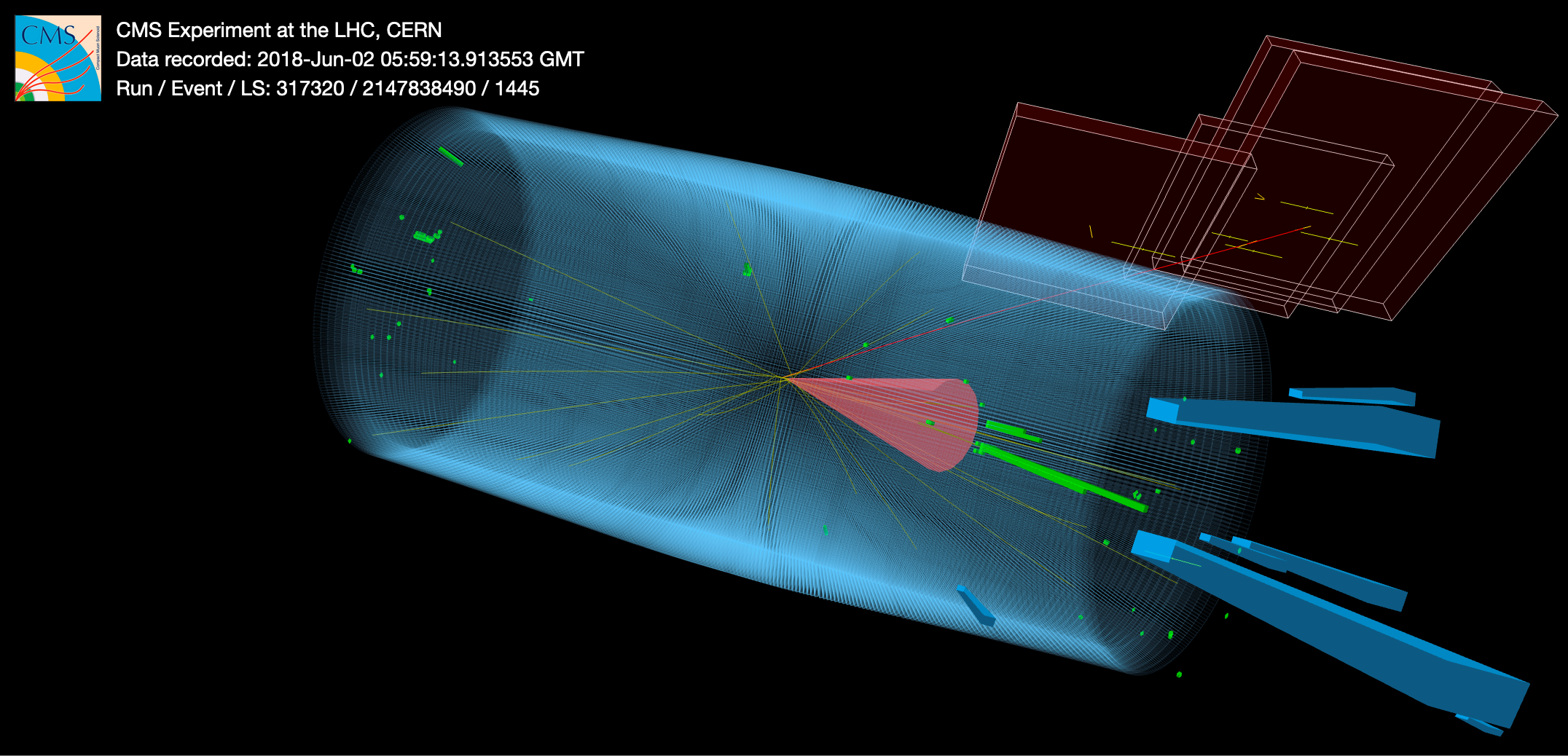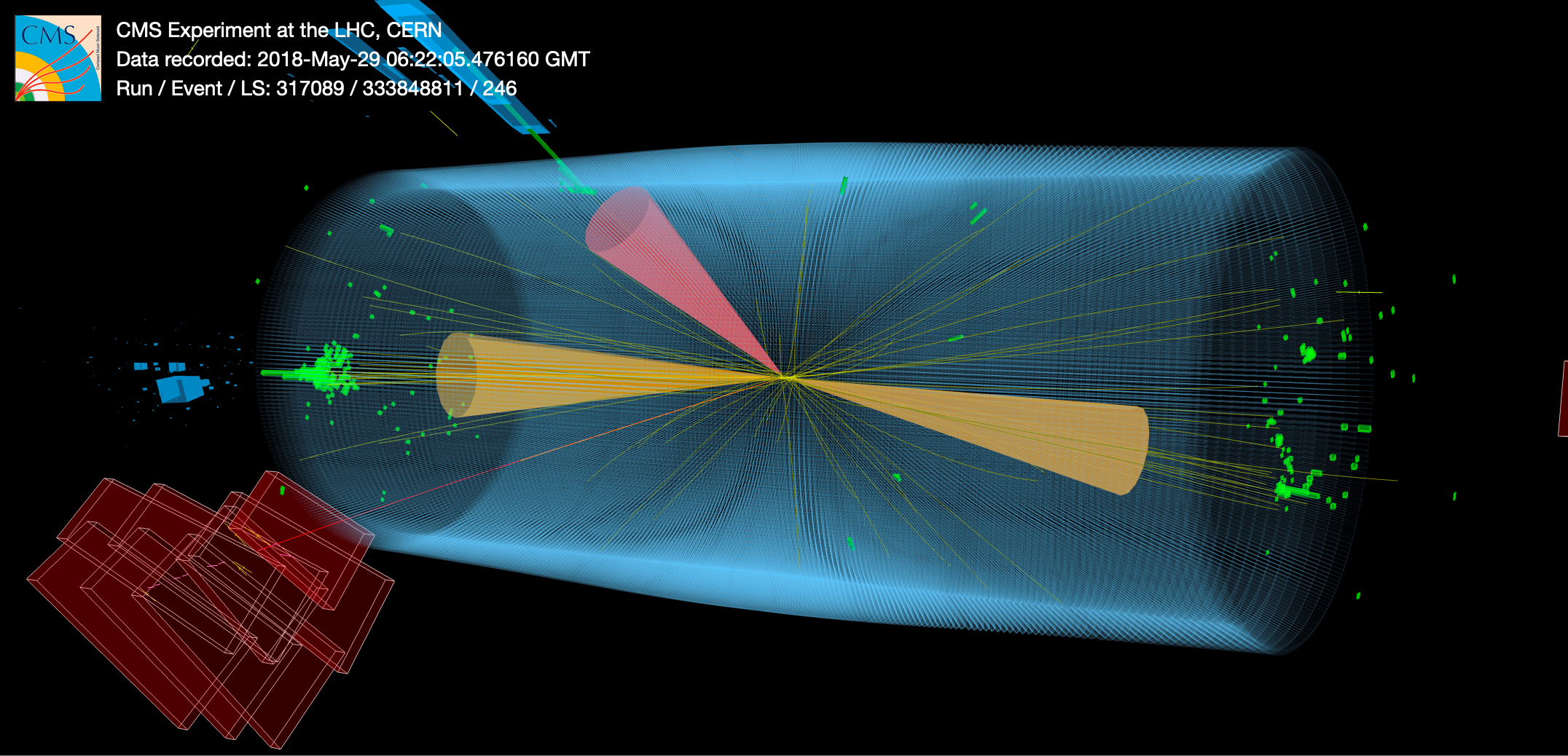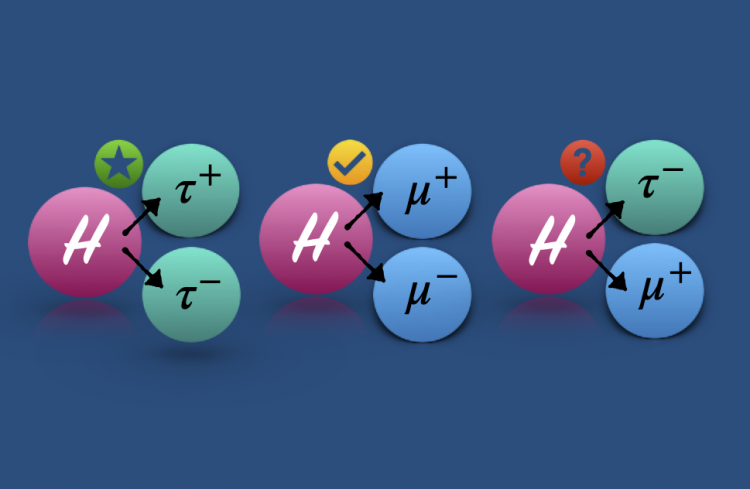To be, or not to be conserved, that is the question: lepton flavour in Higgs boson decays
World science, 25 May 2021
Lepton flavor is a specific quantum number in the Standard model of elementary particle interactions, which differs for three fermion generations. It is known that the lepton number is violated in the neutral lepton sector (for neutrinos); there may also be a theoretically acceptable violation in the charged sector (for leptons). LHC collaborations, in particular the CMS, which includes JINR scientists, are actively looking for similar effects.
The term ‘flavour’ was introduced by Murray Gell-Mann and his student Harald Fritzsch to describe the different types of quarks known at the time – up, down, and strange – the list of quark flavours grew to six. The term is adapted for the lepton sector to describe the three types of charged leptons – electron, muon, and tau. These charged leptons correspondingly have their neutral counterpart – electron neutrino, muon neutrino, and tau neutrino. In the standard model, the lepton flavour is always conserved. In other words, any interaction that occurs in the standard model preserves the flavour of leptons that are involved in the exchange. The standard model does not conserve quark flavour and does not explain why this is so different for leptons. This difference is one of the important open puzzles in particle physics.
In the mid-1960s, observations showed a large discrepancy from the flux of solar neutrinos as predicted from the Sun’s luminosity. The Super-Kamiokande and Sudbury collaborations finally resolved this discrepancy in 2002, and the explanation was attributed to the oscillation of neutrinos of one flavour to another flavour. This suggests that the lepton flavour is not conserved in the neutral sector. Neutrino oscillations have driven considerable motivation to probe for non-conservation of the lepton flavour for charged leptons, also called lepton-flavour violation. Experiments like MEG and BABAR have undertaken the search for lepton-flavour violation, investigating if a muon can decay into an electron and photon or a tau can decay into a lighter lepton and photon. The search for these processes hasn’t shown any deviation from the standard model, and no charged lepton-flavour violation has been observed to date.
The CMS and ATLAS experiments have discovered a new particle in 2012, hypothesized to provide mass to all fundamental particles, called the Higgs boson. The Higgs boson properties are not yet fully untangled and can interact with undiscovered physics particles coming from, for example, dark matter. Hence, the decays associated with a Higgs boson are an exciting territory to explore. Some theories allow for lepton-flavour violating decays of the Higgs boson, and observing such decays will be a clear sign of new physics. Hence, it is essential to probe for lepton-flavour violation in the Higgs boson decays.
The CMS collaboration has performed a search for lepton-flavour violating decays of the Higgs boson using the data collected in proton-proton collisions from 2016 to 2018. In particular, the search looks for the Higgs boson decaying into a muon and a tau lepton or an electron and a tau lepton. As the tau lepton’s lifetime is tiny, it decays inside the detector into either charged and neutral hadrons (mainly pions and kaons) or lighter leptons along with neutrinos. A deep learning technique is used to identify the tau lepton that decays into hadrons and reduce its probability of getting misidentified. Using this deep learning technology has helped in increasing the signal-to-background ratio.
The CMS experiment cannot detect the neutrinos produced from the decay of the tau lepton. However, using the laws of conservation of momentum, one can infer their presence. The neutrinos are assumed to be produced along the direction of the tau lepton for the signal. This assumption is based on the fact that as the tau lepton’s mass is much smaller than the mass of the Higgs boson, it is produced in a highly relativistic manner, and hence the decay products of the tau lepton have the same direction as that of the tau lepton. Using this assumption, one can reconstruct the Higgs boson mass, which helps identify the signal. In Figure 1, we can see a potential lepton-flavour violating event with a muon and a tau lepton with their reconstructed mass of the Higgs boson close to 125 GeV.
 Figure 1: An event similar to the lepton flavor violating decay of the Higgs boson, produced with the gluon fusion production mechanism. The red track corresponds to a muon, while the red cone along with its corresponding calorimeter deposits is the tau lepton.
Figure 1: An event similar to the lepton flavor violating decay of the Higgs boson, produced with the gluon fusion production mechanism. The red track corresponds to a muon, while the red cone along with its corresponding calorimeter deposits is the tau lepton.
 Figure 2: An event similar to the lepton flavor violating decay of the Higgs boson, produced by the vector boson fusion production mechanism. The red track corresponds to a muon, while the red cone along with its corresponding calorimeter deposits is the tau lepton. The two yellow cones correspond to jets that are in a high pseudorapidity region associated with the vector boson fusion.
Figure 2: An event similar to the lepton flavor violating decay of the Higgs boson, produced by the vector boson fusion production mechanism. The red track corresponds to a muon, while the red cone along with its corresponding calorimeter deposits is the tau lepton. The two yellow cones correspond to jets that are in a high pseudorapidity region associated with the vector boson fusion.
The different background contributions are then estimated. The dominant background comes from the Z boson’s decay into a pair of tau leptons (Z⟶ττ). This background is estimated by replacing muon with tau leptons in Z⟶μμ events from data. Another important background comes from rare collisions in which hadrons are misidentified as leptons. The contribution from these events is estimated directly from an independent sample in data enriched with such events. Other background contributions come from processes in which the lepton pair is produced from the decays of quarks and vector bosons and are estimated from the simulation.
Now that the different background contributions have been estimated and the signal is well defined, another machine learning technique has been used to separate the signal from the background. Statistical analysis is performed to obtain the signal strength for the lepton-flavour violating Higgs boson decays. The known experimental and theoretical uncertainties are incorporated into the statistical analysis. No excess has been observed from the statistical analysis. If a Higgs boson can decay into a muon and a tau lepton, such a process can occur utmost in 15 of every 1000 Higgs boson decays. Similarly, if a Higgs boson can decay into an electron and a tau lepton, such a process can occur at most in 22 of every 1000 Higgs boson decays.
The CMS experiment will start collecting data again from the beginning of 2022. In 3 years, the available data is expected to double. The high luminosity phase of the LHC starts from 2027, and a much larger dataset is anticipated by the end of its operation. With much larger datasets, the future LHC runs will make it possible to search for much more rare lepton-flavour violation. Apart from the searches at the LHC, new experiments like Mu2e are currently being designed, that anticipate probing a muon transitioning into an electron using a dataset ten thousand times larger than the one used in a similar previous experiment. The future of the question of lepton flavour is fascinating, and hopefully, we will solve this mystery of the standard model very soon.
Source: CMS collaboration
The paper is published as arXiv:2105.03007 and has been submitted to Physical Review D. Also available on the CMS website.
Scientists of the Joint Institute for Nuclear Research take an active part in the CMS experiment at the Large Hadron Collider (LHC). JINR has taken the leading roles in the experiment for over 25 years, starting from the very beginning of the detector concept development and physics programme proposal. The main efforts of the JINR group are focused on testing the Standard Model and search for new physics with dilepton final states.
